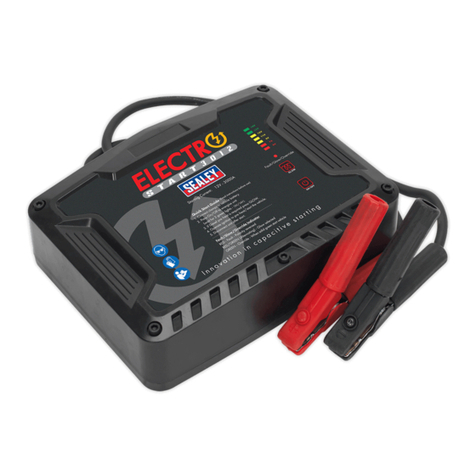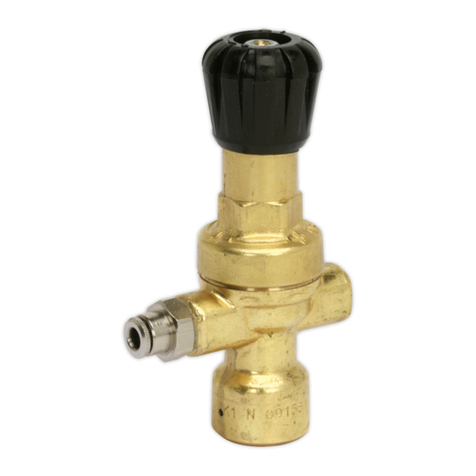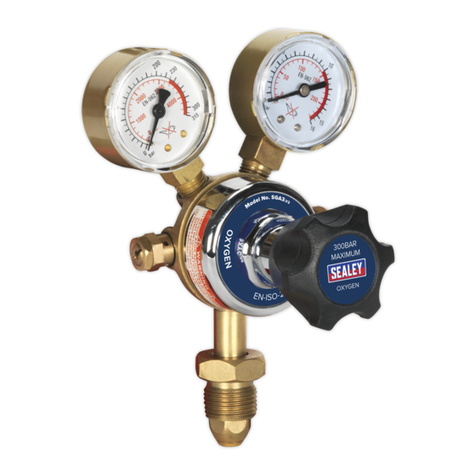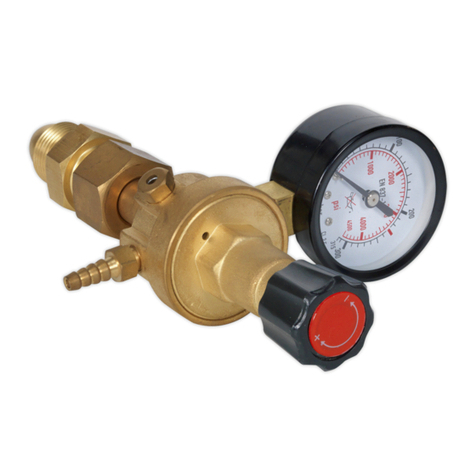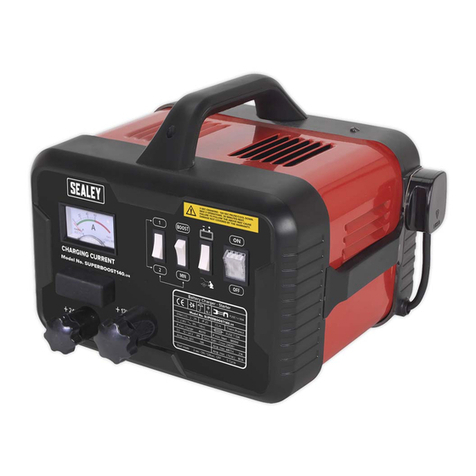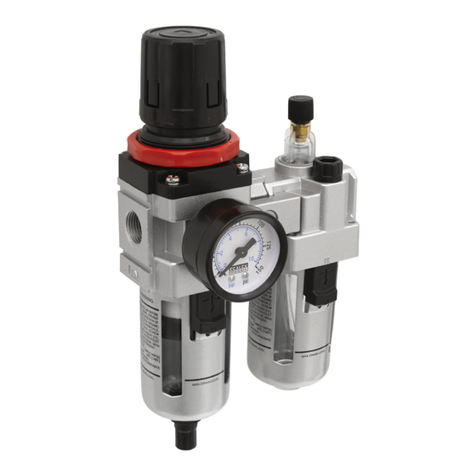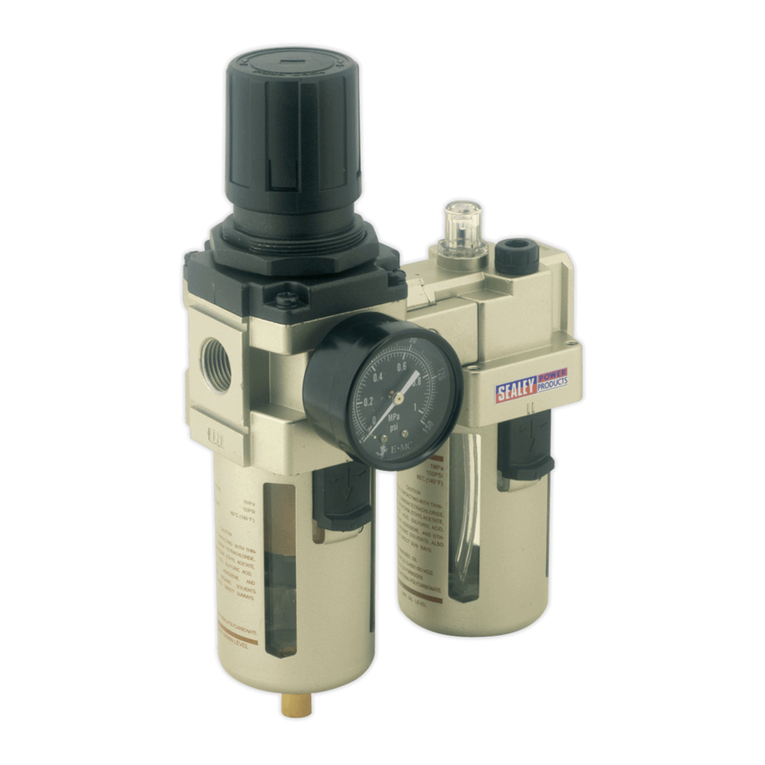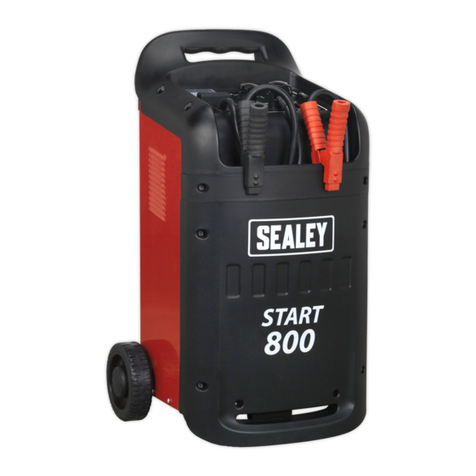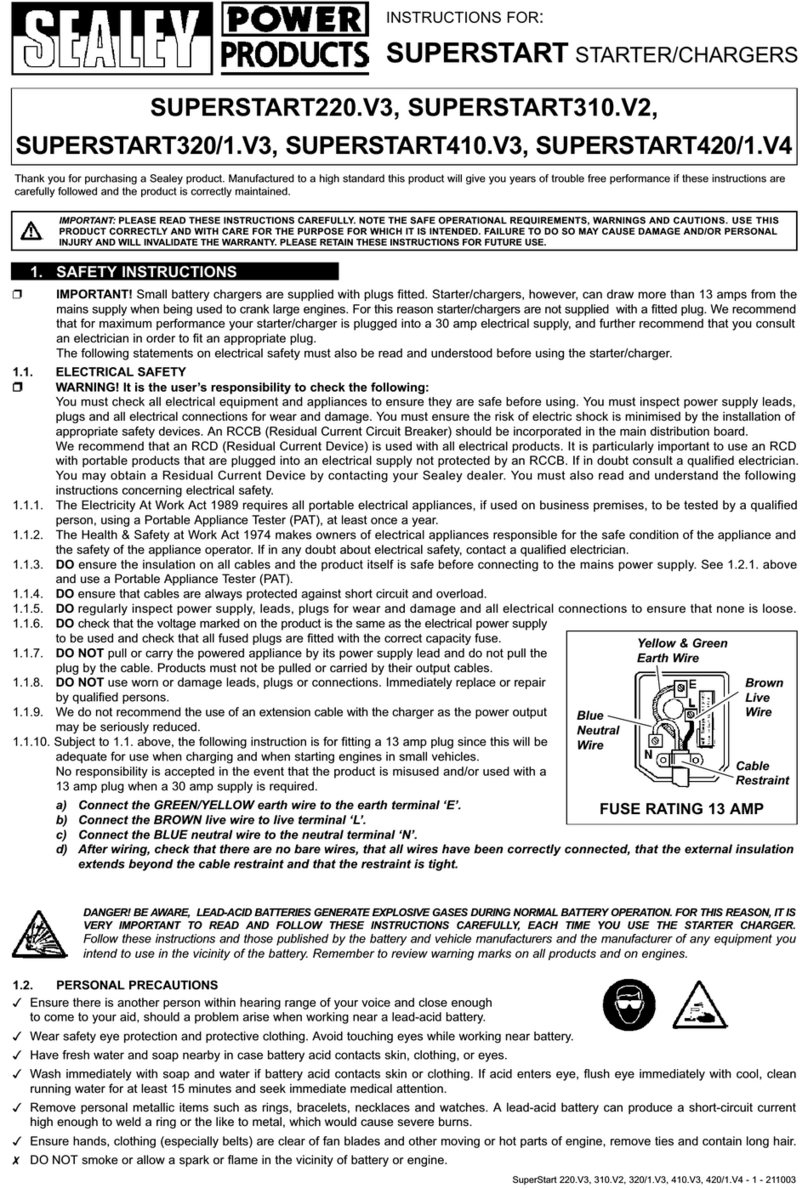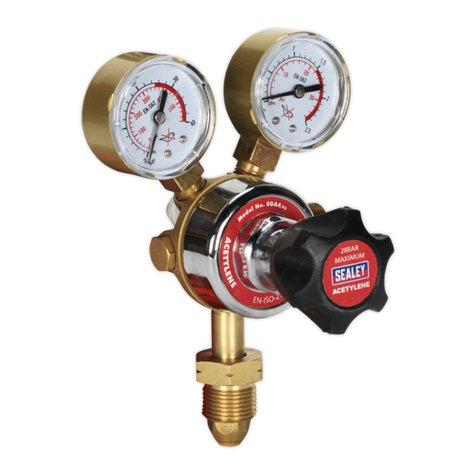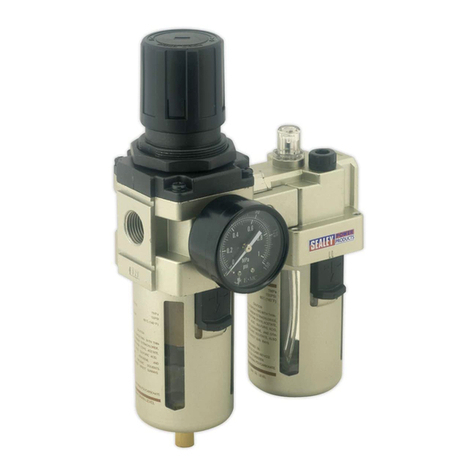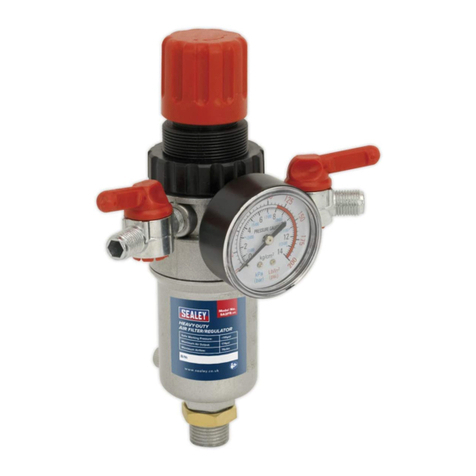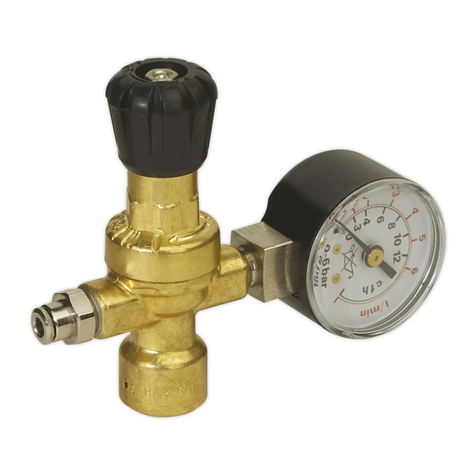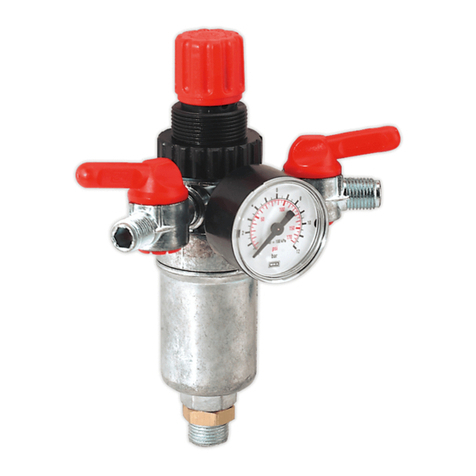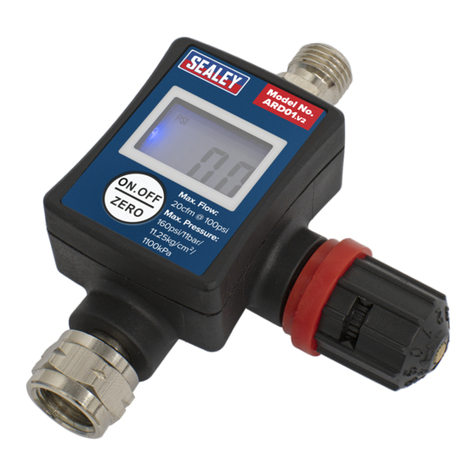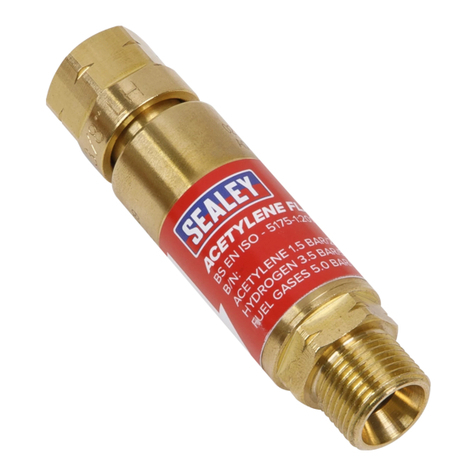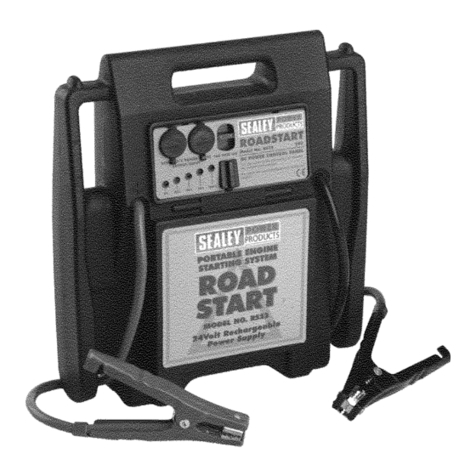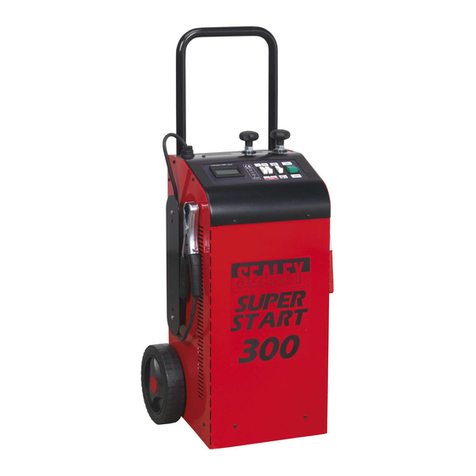
ECS400 | Issue 2 (H13F) 20/04/18
Original Language Version
© Jack Sealey Limited
6.6. Error Codes
Display
Indication
Cause Solution
Err01 Leads disconnected, leads short-circuited. Position the clamps correctly and start charging the battery
again; (see section: 7.2. Operating the Charger).
Battery completely short-circuited. The battery could be defective. Contact your nearest battery
service centre.
Err02 Battery faulty or unrecoverable
No current accepted after 10 hours of recovery.
The battery could be defective. Contact your nearest battery
service centre.
Err03 Internal overheating of battery charger Battery charger over-
load.
Remove any objects that could be covering the ventilation area
of the battery charger or move it to a cooler area. Wait for the
battery charger to start again automatically.
Err04 Tension Error. Set again the voltage corresponding to that of the battery. Start
charging the battery again (see section: 7.2. Operating the
Charger).
One or more elements of the battery has/have short-circuited. The battery could be defective. Contact your nearest battery
service centre.
Err05 Battery voltage too high compared to that set. (You are attempt-
ing to charge a 24V battery with the battery charger set at 12
Volt).
Set again the voltage corresponding to that of the battery. Start
charging the battery again (see section: 7.2. Operating the
Charger).
Err06 Battery capacity excessive Unable to reach end condition. Use a battery charger with greater capacity.
Err07 and
LED RE-
VERSE
The clamps of the output leads are not connected correctly to
the battery.
Position the clamps correctly and start charging the battery
again
(see section: 7.2. Operating the Charger).
Err08 Excessively high output current Current exceeds maximum
limit.
Reduce output current when in manual mode.
7. OPERATION
7.1. Charging Connections.
7.1.1. Charging batteries connected to the vehicle.
7.1.2. Before starting to charge the battery, make sure the power supply lead is NOT plugged into the mains supply.
7.1.3. Locate the vehicle’s earthing point, which is normally connected to the negative battery terminal.
7.1.4. Charging a battery with negative earth, grounded to the vehicle’s chassis:
•Connecttheoutputleadwithredclamptothepositiveterminal(+)ofthebattery.
•Connecttheoutputleadwithblackclamptothevehicle’searthingpoint,keepingitawayfromthebatteryandfromthefuelpipesetc.
NOTE: If connecting to an older vehicle, it may be positively earthed, in which case the clamps need to be connected in reverse.
7.1.5. Charging batteries that are not connected to a vehicle.
7.1.6. Before starting to charge the battery, make sure the power supply lead is NOT plugged into the mains supply.
7.1.7. Connect the output lead with red clamp to the positive terminal (+) of the battery.
7.1.8. Connect the output lead with black clamp to the negative terminal (-) of the battery.
ATTENTION: Make sure both clamps of the output leads generate a suitable contact with their corresponding terminals.
7.2. Operating the Battery Charger.
7.2.1. Once the output leads are connected to the battery, check that the positive lead is connected correctly to either the 12V or 24V
connector on the charger as required. Then plug the power supply lead of the battery charger into the mains supply, making sure that
the voltage matches the nominal voltage of the battery charger (230V-50Hz); having done this, the charger will emit an acoustic signal for
½ second and all the LED indicators on the control panel will switch on for 2 seconds, the digital display shows ----.
7.2.2.ThebatterychargerisconguredinStandbymode,forexample:ONLEDlit,Chargelit,WetLEDlit.TheLEDslightupdifferently
based on the last program saved (see section 6.4. Saving Settings).
7.2.3. At this stage, with the battery charger in Standby mode, set the charging parameters suitable for the type of battery to be charged,
using the buttons on the control panel. The charging parameters selected are displayed by the corresponding LED, which switches on.
7.2.4. Settable charging parameters:
•Functionkey:Charge,Start,Supply,Recovery.
•SetCapacitykey:Basedonthecapacityofthebatteryandontheworkcycle,select:
- Charge 30Ah/80Ah: Charge for batteries with capacity from 30Ah to 80Ah.
- Charge 80Ah/150Ah: Charge for batteries with capacity from 80Ah to150Ah.
- Charge 150Ah/300Ah: Charge for batteries with capacity from 150Ah to 300Ah.
- Charge 4Ah/550Ah: Supports all batteries from a minimum capacity of 4Ah up to a maximum of 550Ah.
Adjust the output current from 0 up to the maximum supported by the operating mode currently selected on the
charger using the dial on the right of the panel.
•Typekey: Dependingontheconstruction/typeofthebattery,select:WetorAgm/SpiralCell.
7.2.5. Once the charging parameters haver been set, press the START/STOP key to start charging the battery. When the START/STOP and
CHARGING LEDs light up, the battery is being charged; the display will show the charging current and the voltage of the battery.
7.2.6. The CHARGING LED remains lit in phases “I” and “U0” whilst the battery is charging.
7.2.7. When the FULL LED switches on, it means that the battery is fully charged (100%) and the charger will switch to the maintenance
phase,keepingthestateofefciencyofthebatteryconstantlymonitoredsothatitisalwaysatanoptimallevelofcharge.Inthis
charging phase, the appliance can be left connected to the battery for several months.
7.2.8. If you wish to end or interrupt the charging cycle, follow the end of charging instructions in section 7.5.
7.3. Intentional Interruption of the Charging Cycle.

